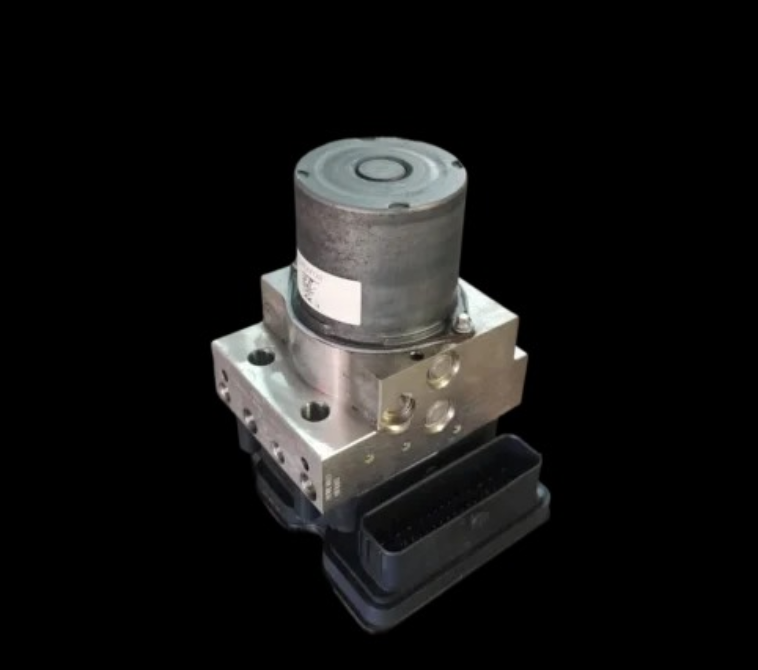ABS Light Myths Busted: What It Really Means When That Dashboard Light Comes On
Every driver knows the feeling. You turn the key, the engine hums to life, and a collection of lights flash across the dashboard. Most go dark in seconds — but one stays on: the ABS light.
Some people panic. Others ignore it. And a surprising number of drivers have no idea what it really means.
Let’s clear up the confusion. This article debunks common myths about the ABS light, explains what it actually indicates, and outlines exactly what to do when it turns on.
What Is the ABS Light?
The ABS light is a dashboard warning that alerts you to a potential issue with your vehicle’s Anti-lock Braking System. This system is designed to prevent your wheels from locking up during sudden braking — helping you stay in control of your vehicle, especially in slippery conditions.
If the light stays illuminated after the initial system check at startup, it means the ABS is no longer functioning correctly. Your car’s regular brakes may still work, but the added safety of ABS is compromised.
Why the ABS Light Comes On: Common Causes
Several things can trigger the ABS light, and while some are minor, others point to more serious concerns:
1. Wheel Speed Sensor Failure
These sensors monitor wheel rotation and help the ABS determine when to engage. Dirt, corrosion, or damage can cause them to malfunction, triggering the light.
2. Low Brake Fluid
Brake fluid plays a role in the ABS system. If it’s too low — possibly from a leak or worn brake pads — the system may stop functioning properly.
3. Damaged or Worn Wiring
Electrical connections in the ABS system can wear out or corrode, especially in older vehicles or those exposed to road salt and moisture.
4. Faulty ABS Module
This is the “brain” of the system. When it fails, the system may shut down entirely and trigger the light.
5. Blown Fuse or Relay
A bad fuse or relay can cut power to the ABS system. This is usually a quick fix, but still requires attention.
How to Respond When the ABS Light Appears
You don’t need to panic — but you do need to act. Here’s what to do:
1. Check the Brake Fluid
Pop the hood and inspect the brake fluid reservoir. If it's below the minimum level, top it up with the recommended type (usually DOT 3 or DOT 4). Don’t forget to check for signs of leaks.
2. Restart the Car
Sometimes, a temporary electronic glitch will trigger the light. Turning the car off and back on may reset the system — but if the light stays on, the issue is real.
3. Scan for Error Codes
If you have access to an OBD-II scanner that supports ABS functions, use it to check for error codes. Many auto parts stores offer this service for free.
4. Inspect the Wheel Sensors
If you’re comfortable, you can inspect the wheel area for dirt, corrosion, or disconnected wiring. Cleaning the sensor area sometimes resolves the issue.
5. Visit a Mechanic
When in doubt, see a professional. A trained technician can diagnose and fix the problem quickly, ensuring your safety isn’t compromised.
Driving With the ABS Light On: Is It Safe?
Short answer: it depends.
If only the ABS light is on, and your regular brakes are working fine, it’s usually safe to continue driving cautiously — but only to your mechanic or service center.
However, if the ABS light is on alongside the red brake warning light, it may indicate a more serious issue, such as brake fluid loss or total brake failure. In that case, stop driving immediately and seek help.
Final Thoughts
Your vehicle talks to you — through sounds, sensations, and those tiny lights on your dashboard. The ABS light is one of the most important ones. Don’t fall for the myths. Don’t assume it’s minor. And don’t ignore it until your safety is compromised.
Check it, fix it, and drive with confidence knowing your vehicle’s braking system is ready for whatever the road throws your way.
https://www.sinspeed.co.uk/category/abs-ecus/
ABS Light Myths Busted: What It Really Means When That Dashboard Light Comes On
Every driver knows the feeling. You turn the key, the engine hums to life, and a collection of lights flash across the dashboard. Most go dark in seconds — but one stays on: the ABS light.
Some people panic. Others ignore it. And a surprising number of drivers have no idea what it really means.
Let’s clear up the confusion. This article debunks common myths about the ABS light, explains what it actually indicates, and outlines exactly what to do when it turns on.
What Is the ABS Light?
The ABS light is a dashboard warning that alerts you to a potential issue with your vehicle’s Anti-lock Braking System. This system is designed to prevent your wheels from locking up during sudden braking — helping you stay in control of your vehicle, especially in slippery conditions.
If the light stays illuminated after the initial system check at startup, it means the ABS is no longer functioning correctly. Your car’s regular brakes may still work, but the added safety of ABS is compromised.
Why the ABS Light Comes On: Common Causes
Several things can trigger the ABS light, and while some are minor, others point to more serious concerns:
1. Wheel Speed Sensor Failure
These sensors monitor wheel rotation and help the ABS determine when to engage. Dirt, corrosion, or damage can cause them to malfunction, triggering the light.
2. Low Brake Fluid
Brake fluid plays a role in the ABS system. If it’s too low — possibly from a leak or worn brake pads — the system may stop functioning properly.
3. Damaged or Worn Wiring
Electrical connections in the ABS system can wear out or corrode, especially in older vehicles or those exposed to road salt and moisture.
4. Faulty ABS Module
This is the “brain” of the system. When it fails, the system may shut down entirely and trigger the light.
5. Blown Fuse or Relay
A bad fuse or relay can cut power to the ABS system. This is usually a quick fix, but still requires attention.
How to Respond When the ABS Light Appears
You don’t need to panic — but you do need to act. Here’s what to do:
✅ 1. Check the Brake Fluid
Pop the hood and inspect the brake fluid reservoir. If it's below the minimum level, top it up with the recommended type (usually DOT 3 or DOT 4). Don’t forget to check for signs of leaks.
✅ 2. Restart the Car
Sometimes, a temporary electronic glitch will trigger the light. Turning the car off and back on may reset the system — but if the light stays on, the issue is real.
✅ 3. Scan for Error Codes
If you have access to an OBD-II scanner that supports ABS functions, use it to check for error codes. Many auto parts stores offer this service for free.
✅ 4. Inspect the Wheel Sensors
If you’re comfortable, you can inspect the wheel area for dirt, corrosion, or disconnected wiring. Cleaning the sensor area sometimes resolves the issue.
✅ 5. Visit a Mechanic
When in doubt, see a professional. A trained technician can diagnose and fix the problem quickly, ensuring your safety isn’t compromised.
Driving With the ABS Light On: Is It Safe?
Short answer: it depends.
If only the ABS light is on, and your regular brakes are working fine, it’s usually safe to continue driving cautiously — but only to your mechanic or service center.
However, if the ABS light is on alongside the red brake warning light, it may indicate a more serious issue, such as brake fluid loss or total brake failure. In that case, stop driving immediately and seek help.
Final Thoughts
Your vehicle talks to you — through sounds, sensations, and those tiny lights on your dashboard. The ABS light is one of the most important ones. Don’t fall for the myths. Don’t assume it’s minor. And don’t ignore it until your safety is compromised.
Check it, fix it, and drive with confidence knowing your vehicle’s braking system is ready for whatever the road throws your way.
https://www.sinspeed.co.uk/category/abs-ecus/













